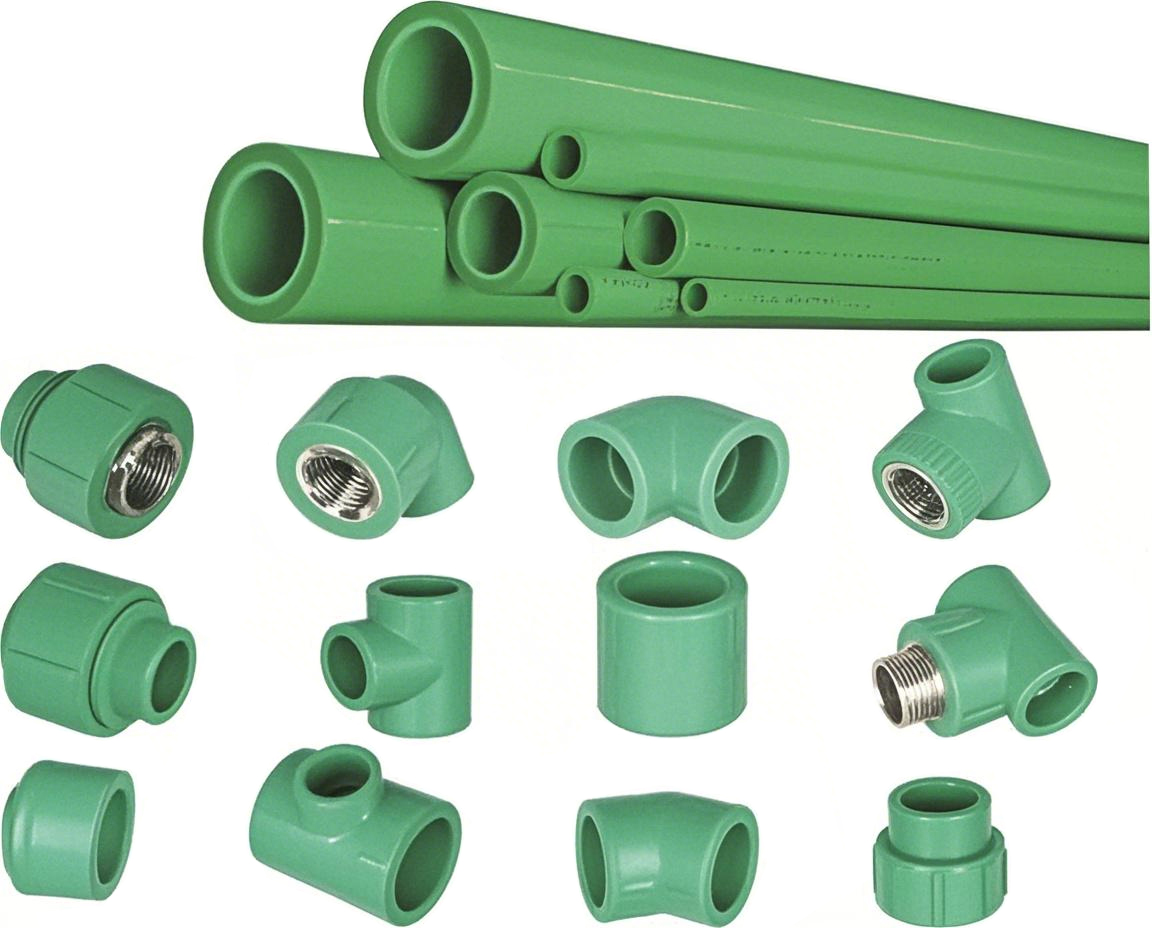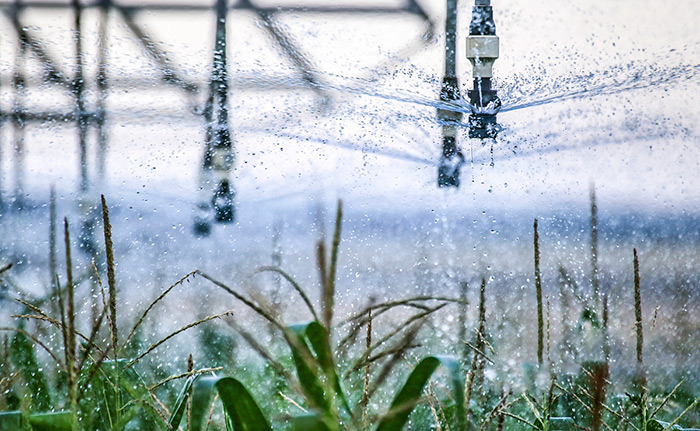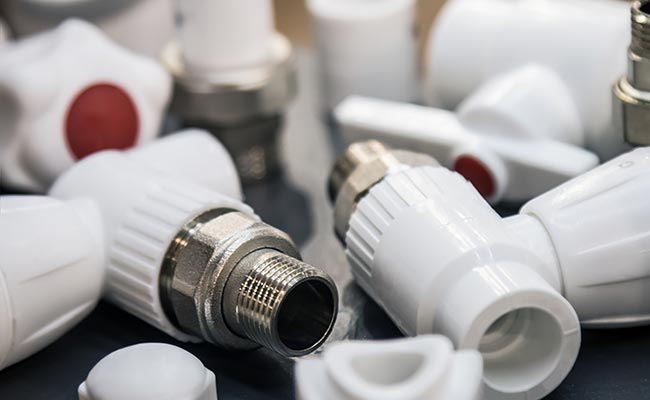
PPR pipe fittings play a key role in modern water systems. Their durability and efficiency make them a trusted choice for reliable plumbing. These fittings can handle temperatures up to 70°C and last over 50 years under normal conditions. With the market expected to grow from USD 8.9 billion in 2023 to USD 14.8 billion by 2032, their popularity keeps rising. This growth reflects the demand for cost-effective and sustainable solutions in both residential and commercial plumbing.
Key Takeaways
- PPR pipe fittings are strong and can last 50+ years. They are a dependable option for plumbing systems.
- Their design prevents leaks and resists rust, saving water and money.
- PPR fittings are good for the environment, recyclable, and support green building.
What Are PPR Pipe Fittings?
Overview of PPR material
PPR, or Polypropylene Random Copolymer, is a high-quality plastic material widely used in plumbing systems. It is known for its durability, non-toxicity, and resistance to chemical reactions. Unlike traditional materials like copper or steel, PPR does not corrode or degrade over time. This ensures a clean and uncontaminated water supply for years. Additionally, PPR offers excellent thermal insulation, making it ideal for both hot and cold water systems.
| Property | Description |
|---|---|
| Material | Made from Polypropylene Random Copolymer (PPR) |
| Durability | Resistant to corrosion, scaling, and chemical degradation; lifespan of up to 50 years |
| Thermal Insulation | Can withstand temperatures up to 95°C without losing integrity |
| Non-toxicity | Non-reactive with water, ensuring uncontaminated water supply |
Key features of PPR pipe fittings
PPR pipe fittings stand out for their unique features. They are lightweight yet strong, making them easy to handle and install. Their smooth inner surfaces reduce friction, ensuring efficient water flow. These fittings are also leak-proof, thanks to heat fusion technology that creates secure joints. Moreover, they can withstand high temperatures and pressures, making them suitable for various applications.
- High Impact Resistance: Withstands mechanical stress and external pressure.
- Thermal Stability: Maintains integrity at extreme temperatures up to 95°C.
- Corrosion Resistance: Chemically inert, ensuring a clean water supply.
Types of PPR pipe fittings and their functions
PPR pipe fittings come in various types, each designed for specific purposes. Elbows and tees help change the direction of water flow, while couplings connect pipes of the same diameter. Reducers join pipes of different sizes, ensuring compatibility. Valves control the flow of water, offering precision and efficiency. Our PPR valves and fittings are meticulously engineered for reliable performance, providing leak-free connections and long-term durability.
Advantages of PPR Pipe Fittings
Durability and long lifespan
PPR pipe fittings are built to last. Their resistance to rust and corrosion ensures they remain functional for decades. Unlike traditional materials like steel or copper, PPR fittings don’t degrade when exposed to water or chemicals. This makes them a reliable choice for long-term plumbing systems.
Their durability is further enhanced by their ability to withstand high temperatures and pressures. Whether used in residential or industrial settings, these fittings maintain their integrity under challenging conditions. The heat fusion installation method creates seamless joints, reducing the risk of leaks and extending the system’s lifespan.
| Feature | PPR Pipes | Other Materials (Copper, Steel, PVC) |
|---|---|---|
| Corrosion Resistance | No corrosion, extends service life | Prone to corrosion |
| Joint Integrity | Welded joints, less prone to leaks | Mechanically joined, more leak-prone |
| Thermal Expansion | Lower thermal expansion | Higher thermal expansion |
| Expected Lifespan | Up to 50 years or more | Generally shorter lifespan |
Resistance to corrosion and scaling
Corrosion and scaling are common issues in plumbing systems, but not with PPR pipe fittings. These fittings are chemically inert, meaning they don’t react with water or other substances. This property prevents the buildup of scale inside the pipes, ensuring smooth water flow over time.
Additionally, their resistance to corrosion makes them ideal for areas with hard water or high mineral content. Unlike metal pipes that rust or degrade, PPR fittings maintain their quality and performance. This not only improves the efficiency of the water system but also reduces the need for frequent maintenance.
- Key Benefits of Corrosion Resistance:
- Ensures clean and uncontaminated water supply.
- Reduces the risk of leaks and pipe damage.
- Extends the overall lifespan of the plumbing system.
Eco-friendly and recyclable material
PPR pipe fittings are an environmentally friendly choice. They are made from non-toxic materials, ensuring they don’t leach harmful substances into the water. This makes them safe for both humans and the environment.
Another significant advantage is their recyclability. PPR materials can be recycled and repurposed, reducing waste and promoting sustainability. The production process of PPR fittings also generates lower greenhouse gas emissions compared to traditional materials like PVC or steel.
| Environmental Metric | Description |
|---|---|
| Non-toxic properties | PPR is a non-toxic material, ensuring it does not leach harmful substances. |
| Recyclability | PPR materials can be recycled, enhancing their sustainability profile. |
| Lower greenhouse gas emissions | PPR production results in lower greenhouse gas emissions compared to alternatives. |
By choosing PPR pipe fittings, users contribute to a greener future while enjoying a reliable and efficient plumbing system.
Cost-effectiveness and reduced maintenance needs
While the initial cost of PPR pipe fittings may be slightly higher than some alternatives, their long-term benefits outweigh the upfront investment. These fittings last over 50 years with minimal maintenance, significantly reducing the need for frequent repairs or replacements.
Their resistance to corrosion and scaling further lowers maintenance costs. Unlike metal pipes that require regular cleaning or treatment, PPR systems remain efficient without additional upkeep. This makes them a cost-effective solution for both residential and commercial plumbing projects.
PPR fittings also save time and effort during installation. Their lightweight and user-friendly design allow for quick assembly, making them a favorite among professional plumbers and DIY enthusiasts alike. Over time, the reduced maintenance and repair costs make PPR pipe fittings a smart financial choice.
Pro Tip: Investing in PPR pipe fittings now can save you money and hassle in the long run. Their durability and efficiency ensure years of trouble-free operation.
Applications of PPR Pipe Fittings
Residential plumbing systems
PPR pipe fittings are a game-changer for residential plumbing. They ensure consistent water pressure and smooth flow to fixtures like showers and faucets. Their optimized bore sizes prevent excessive pressure loss, making them ideal for homes with multiple water outlets.
- Why homeowners love PPR fittings:
- Minimized pressure loss keeps water flowing steadily.
- Smooth inner surfaces reduce friction, ensuring reliable performance.
- Lightweight design makes installation quick and hassle-free.
These fittings also resist corrosion and scaling, which means fewer maintenance headaches for homeowners. Whether it’s a new build or a renovation project, PPR pipe fittings provide a durable and efficient solution for residential plumbing systems.
Commercial water supply networks
In commercial settings, plumbing systems face higher demands. PPR pipe fittings rise to the challenge with their durability and versatility. They’re lightweight and recyclable, making them an eco-friendly choice for large-scale projects.
Comparative data highlights their strengths:
| Feature | PPR Pipes | FlowGuard CPVC |
|---|---|---|
| Environmental Impact | Recyclable, reducing environmental impact | Non-recyclable, higher environmental impact |
| Health and Safety | Free from toxic substances | May contain harmful substances |
| Versatility | Suitable for various applications | Limited to specific applications |
| Durability | Resistant to cracks and impacts | Stronger tensile and flexural strength |
| Chemical Resistance | Suitable for acidic and alkaline solutions | Resistant to hypochlorous acid |
| Weight | Lightweight, easier to handle | Heavier than PPR |
| Thermal Insulation | Low thermal conductivity | Higher thermal conductivity |
| Installation Ease | Fusion welding for seamless joints | Solvent cement welding process |
| Cost-effectiveness | Lower life-cycle costs due to longevity | Higher initial costs but durable |
| Combustibility | More combustible than CPVC | Lower combustibility, safer in fire |
While FlowGuard CPVC offers superior strength and chemical resistance, PPR pipe fittings stand out for their environmental benefits and ease of installation. For commercial water supply networks, PPR fittings provide a reliable and cost-effective solution that balances performance and sustainability.
Industrial applications, including high-pressure systems
Industrial systems demand robust materials that can handle high pressures and extreme conditions. PPR pipe fittings meet these requirements with their exceptional strength and long-term reliability. Standards like ISO 15874 and ASTM F2389 validate their performance in high-pressure environments.
- Key metrics for industrial applications:
- Pressure testing protocols ensure safety and reliability.
- Long-term pressure resistance minimizes system failures.
- Fusion welding creates leak-proof connections for added durability.
| Standard | Purpose |
|---|---|
| ISO 15874 | Establishes material requirements for PPR pipes under high pressure. |
| ISO 9001 | Ensures quality management in manufacturing processes. |
| ASTM F2389 | Defines pressure testing protocols and long-term pressure resistance. |
From chemical plants to manufacturing facilities, PPR pipe fittings deliver consistent performance under demanding conditions. Their ability to withstand high temperatures and pressures makes them a trusted choice for industrial applications.
Use in HVAC and heating systems
PPR pipe fittings play a vital role in HVAC and heating systems. Their heat fusion welding process ensures leak-proof connections, enhancing reliability and efficiency. This flameless technology has been proven successful for nearly four decades, making it a safe and effective choice for heating installations.
- Heat fusion welding creates stronger and more reliable connections.
- Lightweight design reduces labor costs during installation.
- Leak-proof joints minimize maintenance needs over time.
| Aspect | Description |
|---|---|
| Energy Efficiency | PPR fittings contribute to reliable and efficient installations, maximizing system performance. |
| Reliability | Techniques ensure long-lasting installations with minimized maintenance requirements. |
Whether it’s a residential heating system or a commercial HVAC setup, PPR pipe fittings deliver energy-efficient and durable solutions. Their ability to handle high temperatures and pressures ensures optimal performance in heating applications.
Role of PPR Pipe Fittings in Sustainable Water Systems
Leak-proof connections for reducing water waste
Water leaks are a major cause of waste in plumbing systems. PPR pipe fittings solve this problem with their leak-proof design. These fittings use heat fusion technology to create seamless joints, eliminating weak points where leaks might occur. Their resistance to corrosion ensures they stay reliable for decades, reducing the need for frequent repairs.
- PPR fittings significantly lower the risk of leaks.
- Their durability minimizes water waste over time.
- Corrosion resistance ensures long-lasting performance.
By preventing leaks, PPR pipe fittings help conserve water and reduce maintenance costs. This makes them an excellent choice for sustainable water systems.
Energy efficiency in water heating systems
PPR pipe fittings are ideal for water heating systems. Their thermal insulation properties reduce heat loss, keeping water warm for longer. This means less energy is needed to maintain the desired temperature. Additionally, their ability to handle high temperatures ensures they perform well in demanding heating applications.
Using PPR fittings in water heating systems not only saves energy but also lowers utility bills. This makes them a smart and eco-friendly option for homes and businesses.
Supporting green building initiatives
Green building practices prioritize materials that are durable, recyclable, and environmentally friendly. PPR pipe fittings check all these boxes. Their long lifespan reduces waste, while their recyclability supports sustainable construction. Builders increasingly choose PPR fittings for new projects due to their reliability and eco-friendly nature.
- Urbanization and industrialization drive the demand for PPR fittings.
- Their corrosion resistance and longevity make them ideal for sustainable construction.
- Recyclable materials align with green building goals.
By incorporating PPR pipe fittings, builders contribute to a greener future.
Contribution to long-term environmental sustainability
PPR pipe fittings play a vital role in protecting the environment. Their durability reduces the need for replacements, cutting down on material waste. They also prevent water loss through leaks, conserving a precious resource. Additionally, their production process generates fewer greenhouse gas emissions compared to traditional materials.
Choosing PPR fittings supports long-term sustainability by reducing waste, conserving water, and lowering environmental impact. They are a small but powerful step toward a more sustainable world.
PPR pipe fittings are transforming water systems with their unmatched reliability and eco-friendly design. They ensure clean water through anti-microbial properties and reduce waste with leak-resistant connections. Their smooth interiors improve energy efficiency, while sustainable manufacturing processes align with green building goals. These innovations make them a cornerstone of modern plumbing solutions.
- Key benefits include:
- Anti-microbial resistance for safer water.
- Leak-proof designs that conserve resources.
- Longevity, reducing replacements and waste.
By choosing PPR pipe fittings, users invest in a durable, efficient, and sustainable future for water management.
FAQ
What makes PPR pipe fittings better than traditional materials like copper or PVC?
PPR fittings resist corrosion, last longer, and are eco-friendly. Their heat fusion joints prevent leaks, making them more reliable and cost-effective for plumbing systems.
Can PPR pipe fittings handle both hot and cold water systems?
Yes! PPR fittings work perfectly for both. Their thermal insulation and ability to withstand high temperatures make them ideal for hot and cold water applications.
Are PPR pipe fittings easy to install?
Absolutely! Their lightweight design and heat fusion technology simplify installation. Even DIY enthusiasts can assemble them quickly without professional tools or expertise.
Tip: Always follow the manufacturer’s guidelines for the best results during installation.
Post time: Apr-29-2025




